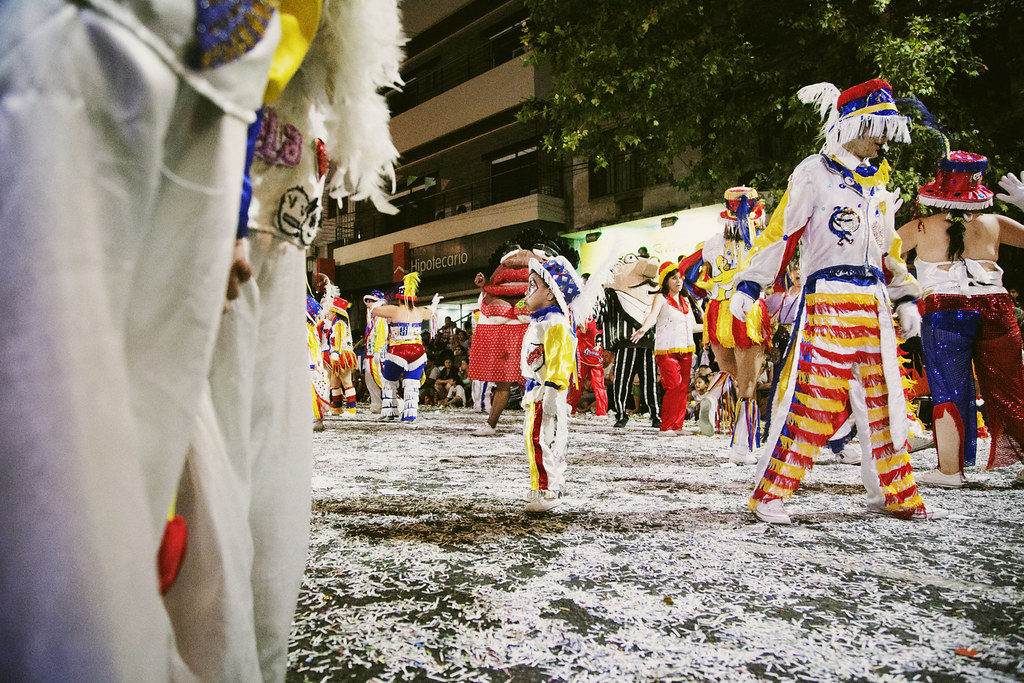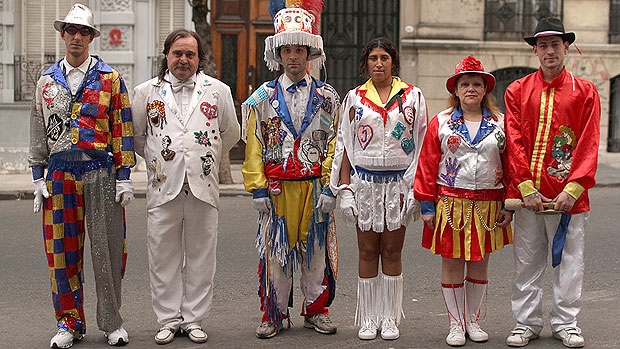NOAH REICH looks at ‘Caprichosos de San Telmo’, Alison Murray’s personal homage to the working class musicians and dancers of Buenos Aires.
Alison Murray’s poignant, moving 2011 documentary, Caprichosos de San Telmo, follows the progress of a Murga dance troupe through the haggard streets of Buenos Aires as they prepare for their annual performance at the city carnival. However, Murray coaxes far more from the film and its subjects than simply an exploration of dance: she subtly and expertly uses the troupe milieu to question our contemporary societal values and the ways in which people can escape the struggle of everyday life.
With a background in dance and choreography, Murray was struck by the Murga troupes as she strolled through Buenos Aires, where she was spending time away from her home of Toronto with her newborn daughter. Murga, importantly, has its history in the African slave population of Argentina, who arrived from the Spanish port of Cadiz towards the end of the 18th century, and were supposedly allowed to sing, dance, and play music in the streets by their masters during the traditional period of Catholic ‘permissiveness’ in the run-up to Lent. The Murguesa (Murga dancers) retain an ironic awareness of their roots. Although the black population of Argentina is now dramatically reduced, dancers still don the traditional top hats and smart jackets that their African predecessors would wear to mock their masters.
Murray’s goal in the film seems evident from the outset. A remarkable strobe sequence introduces and finishes the documentary, and through the flickering lights we see glimpses of the vivid colours of the Murga costumes, the grinning faces of the Murguesa, and the clashes of the symbols and beats of the bombo con platillo drums. The opening gives the Murga an immediately ethereal, dreamlike quality that Murray expands upon during the film. In the Q&A session that followed the screening at the Bertha DocHouse, Murray told the audience that the scene was filmed separately, in a studio, to the rest of the handheld camera documentary footage because she felt unable to capture the real vivacity and deafening sound of the Murga during its live performances.

The dreamlike sequences that bookend the film enclose the reality of daily life for the dancers of the Murga within them. The Murga is in stark contrast to Argentina’s other famous dance export, the Tango, due to its association with the ‘lower’ reaches of society. As such it is looked down upon by much of the Argentine middle class. The people upon whom Murray chooses to focus act as examples of the very bleak prospect of life for the working class in contemporary Argentina. However, Murray does not show us their familial lives in order to elicit sympathy from her audience – instead, she seems to see the poverty of the Murguesa as a source of their strength as a community. Pichi, the leader of the Caprichosos, states gravely that “the Murga grows more during crisis than during abundance”. This is a group of people brought together by a common desire to dance, to form a community, and to find solidarity and escape from their lonely and isolated existences.
The Murguesa, as one dancer describes poignantly, “leave everything behind and dance”, and Murray is clever to follow suit; rather than exploitatively lingering upon the difficult lives of these people, she chooses to focus upon the way in which their art transforms them, regardless of their background, to a state of strange, surreal catharsis. In a world in which people lose jobs day by day – one Murguesa loses three separate jobs during the period of filming – the Murga remains the constant in their lives, the glue that binds their fractured community together in the most trying times. Murray’s camera is drawn towards the ironies of daily life: the Murguesa travel to their performances in a school bus and older dancers teach younger ones the way of the troupe, and the film ends with the group erecting their tents, effectively building a new community together. This community represents the real form of education for the children brought up as a part of it.

The film, despite its positive receptions in both Toronto and London, failed to find a proper audience in its native country, a fact Murray sees as indicative of the remaining class divisions within Argentine society and the lingering association to slavery that the Murga retains. Even within the Murga there are splits, as members leave Caprichosos to form new groups of their own. After all, this troupe is a microcosm of wider society, but with an overriding feeling of pride, family, and community distinguishing it from the solitary existence that we tend to feel to as citizens of the modern, commercialised urban world we reside in. As Pichi reflects, “at least there’s some joy among all the sadness”.
‘Caprichosos de San Telmo’ was screened as part of the DocHouse’s ‘Filmmakers Showcase’, a new season of innovative documentaries introduced by their directors. You can find out more here.





